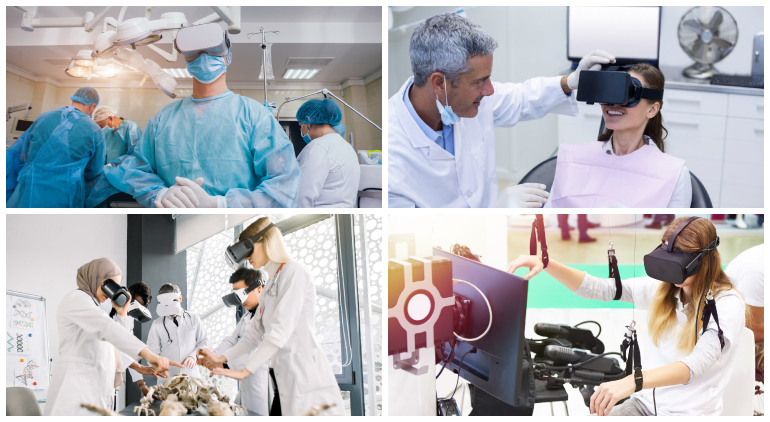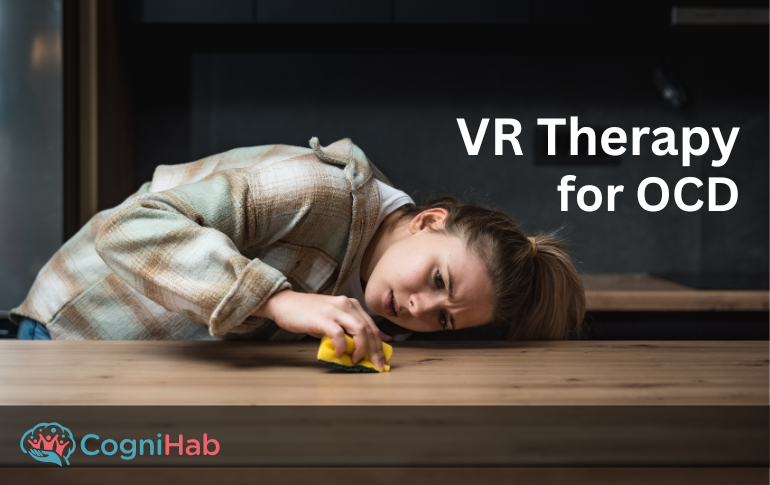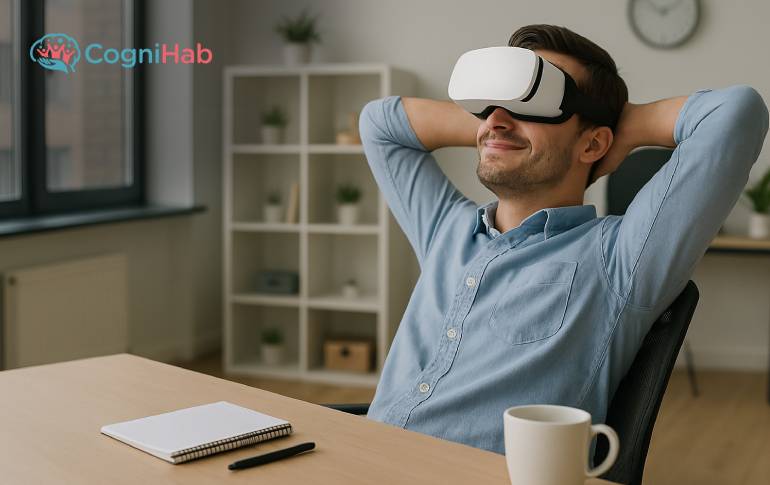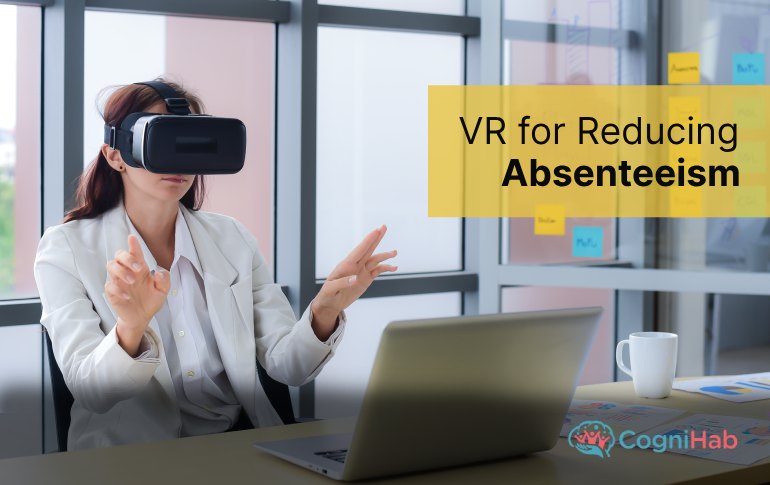Using Virtual Reality in Hospitals - Few Examples and Benefits
Virtual reality has advanced healthcare technologies significantly. The AR/VR health market is estimated to reach 5.1 billion dollars by 2025. This technology is extremely helpful for training. It also helps in surgery simulation, patient treatment and care.
Virtual reality provides assistance to patients in a number of ways such as depression, cancer, autism, visual impairments.
Virtual Reality Technology It orchestrates the experience of a three-dimensional, computer-generated experience. These environments are designed to give the users a sense of reality even when they are trapped in a virtual world. by manipulating the virtual world in a realistic way.
Healthcare is one of the many prime sectors, transformed by the technology of virtual reality. This is primarily because virtual reality holds an immense potential for people associated with medical professionals such as patients, students, caregivers. Thus, this technology is constantly being innovated by constant improvement.
What Is Virtual Reality?
Virtual reality or VR is a kind of technological advancement that is used to create a simulated recreates real-life environment. The traditional interface's methods simply used a screen to interact with the users.
There were, with no real simulation. Whereas, in VR, the user is located inside an experience, whereas they are able to interact with 3D reality. This sense of reality is capable of simulating the sensory organs of a user. such as vision, hearing, touch and even smell, thus Thus, keep the user completely gets immersed inside the 3D world experience.
Hence, VR is an artificial environment devised with software and presented to the user in a way, that the user accepts it as a real environment..
Virtual reality can beis categorised in two divisions.
● Games or interactive stories – Environment created for entertainment
● Recreation of The construction of an imaginary environment for the purpose of games or interactive stories.
● The simulation of a real environment for the purpose of research, training, or education.
Virtual Reality in Hospitals
Virtual reality in hospitals has emerged as an innovative tool. It has the ability to mitigate safety reduce risks and save lives,, especially in the healthcare industry.
We will discuss the benefits of using Virtual Reality in hospitals and how the simulation recreation of real environment achieved by the technology of VR is improving healthcare professionals' and patients' circumstances-circumstances conditions. Read on to know more…
Benefits Of Using Virtual Reality In Hospitals
● VR Training Toto Reduce Risks
For instance, before performing a complicated surgery, the surgeons can use VR to gain experience and comprehend how to perform that surgery. In this way, the chances of putting the patient’s life in danger will reduce.
Other valuable trainings imparted by VR training aresuch as learning human anatomy and controlling the spread of infectious diseases such as COVID-19., can be received by utilising the technology of virtual training. Using the technology of VR, Cognihab, World’s first and only VR based healthcare solution provider, is benefiting both doctors and patients.
VR training in the healthcare sector is providing the healthcare professionals, the appropriate training that they require without risking any individual’s life.
For instance, before performing a complicated surgery, the surgeons can use VR to gain experience and comprehend how to perform that surgery. In this way, the chances of putting the patient’s life in danger will reduce.
Other valuable trainings imparted by VR training aresuch as learning human anatomy and controlling the spread of infectious diseases such as COVID-19., can be received by utilising the technology of virtual training. Using the technology of VR, Cognihab, World’s first and only VR based healthcare solution provider, is benefiting both doctors and patients.
● Better Pain Management
The parts of the brain responsible for the feeling of any kind of pain are called somatosensory cortex and insula. It has been noticed that these parts remain less active, which significantly reduces the sensation of pain, when a patient is immersed in the world of virtual reality.
Moreover, VR can help patients endure painful medical procedures. Cognihab has invented VR based clinically validated interventions for step by step recovery and patient’s rejuvenation. This idea for those suffering from depression, stress, painful surgery due to phantom limb pain etc.
● Encourage Physical Rehabilitation & Cognitive Functioning
VR technology can help patient’s movement and assist them in exercising better than what can be achieved through physical therapy. In a simulated environment, the patients are so immersed in the virtual reality that they do not realize the physical pain that accompanies the physical therapy. In this way, they easily achieve their target without realising the painful sensation.
Cognihab's VR Stroke Rehabilitation Suite, is the world's first immersive all in one rehabilitation solution,nsolution co-created with Indian Spinal Cord Injury CenterCentre, AIIMS and Lady Harding hospital.
The virtual reality games included in this suite targets a patient’s upper and lower body to aid long-lasting result, improve body balance and help patients to perform tasks more effectively. Also, cognitive rehabilitation is modelled on vVirtual rReality-based journeys and games for patients with zero body movements help in cognitive rehabilitation.
VR technology can help patient’s movement and assist them in exercising better than what can be achieved through physical therapy. In a simulated environment, the patients are so immersed in the virtual reality that they do not realize the physical pain that accompanies the physical therapy. In this way, they easily achieve their target without realising the painful sensation.
Cognihab's VR Stroke Rehabilitation Suite, is the world's first immersive all in one rehabilitation solution,nsolution co-created with Indian Spinal Cord Injury CenterCentre, AIIMS and Lady Harding hospital.
The virtual reality games included in this suite targets a patient’s upper and lower body to aid long-lasting result, improve body balance and help patients to perform tasks more effectively.
Also, cognitive rehabilitation is modelled on vVirtual rReality-based journeys and games for patients with zero body movements help in cognitive rehabilitation..
Do Hospitals Use VR?
Yes, hospitals use the technology of Virtual Reality for a variety of purposes. VR training helps healthcare professionals get the hands-on training they need, while offering them opportunities to directly help their patients in many areas of healthcare which range from diagnosis, treatment such as surgery, rehabilitation, counselling etc.
This revolutionary technology of virtual reality has been utilised by Cognihab to help patients rise beyond their limitations. Cognihab is benefitting both the doctors and the patients in leading institutes such as AIIMS, Indian Spinal Injury Centre, National Institute of Ayurveda and emerged as the world pioneer VR based healthcare solution provider.
Be it medical training, critical procedure simulations, patient awareness, motor rehabilitation, non-motor rehabilitation, Autism care, pain relief, anxiety reduction or even fighting depression, our modules have shown great results throughout the patiet's treatment lifecycle and significantly reduced pain percetion, anxiety levels and opioids amongst patients.







